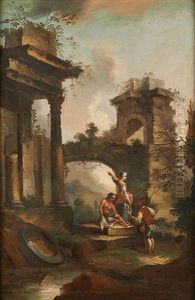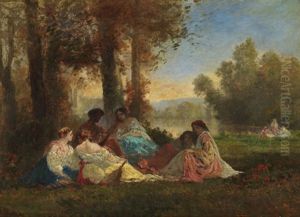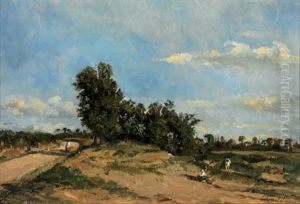Alexandre Eugene Castelnau Paintings
Alexandre Eugene Castelnau was a French artist born in 1823, whose work spanned much of the 19th century, a period rife with social, political, and artistic upheaval. Castelnau's oeuvre is less documented in the mainstream art historical narrative, often overshadowed by his contemporaries who were at the forefront of movements such as Impressionism and Realism. Despite this, his contributions to the French art scene, particularly in the realms of painting and sculpture, offer a fascinating glimpse into the evolving tastes and techniques of the era.
Castelnau's early life was marked by a traditional artistic education, typical of the period, where he likely engaged with the rigorous academic standards imposed by the French Academy. This institution dominated French art education and exhibition opportunities, emphasizing classical approaches to art, focusing on historical and mythological subjects, and advocating for meticulous, realistic representations. Castelnau, like many artists of his time, would have been trained in these principles, which aimed at preparing artists to compete for the prestigious Prix de Rome, a scholarship that offered winners the chance to study in Rome.
Throughout his career, Alexandre Eugene Castelnau navigated the shifting artistic landscape of 19th-century France. While specific details of his individual contributions and the evolution of his style are less recorded, it can be inferred that his work reflected broader artistic trends of the period, including a gradual move towards realism and perhaps even early expressions of impressionistic sensibility. The latter part of the 19th century, during which Castelnau was active, was a time when artists began to challenge the strictures of the Academy, seeking instead to capture the immediacy of life, the flux of light, and the subtleties of color outside the confines of their studios.
Despite the lack of abundant documentation on Castelnau's life and work, it is clear that he was a part of the vibrant and tumultuous art world of 19th-century France. His artistic journey was emblematic of many artists of his time, who straddled the line between academic traditions and the burgeoning movements that would come to define modern art. Castelnau died in 1892, leaving behind a legacy that, while perhaps not as widely recognized as that of his peers, contributes to our understanding of this pivotal era in art history.
In summary, Alexandre Eugene Castelnau's biography is a window into the life of a 19th-century French artist navigating the complex transitions of his time. His story is a testament to the myriad artists whose works and lives played roles in the rich tapestry of art history, contributing to the shifts in style, technique, and thematic exploration that characterized the century.



